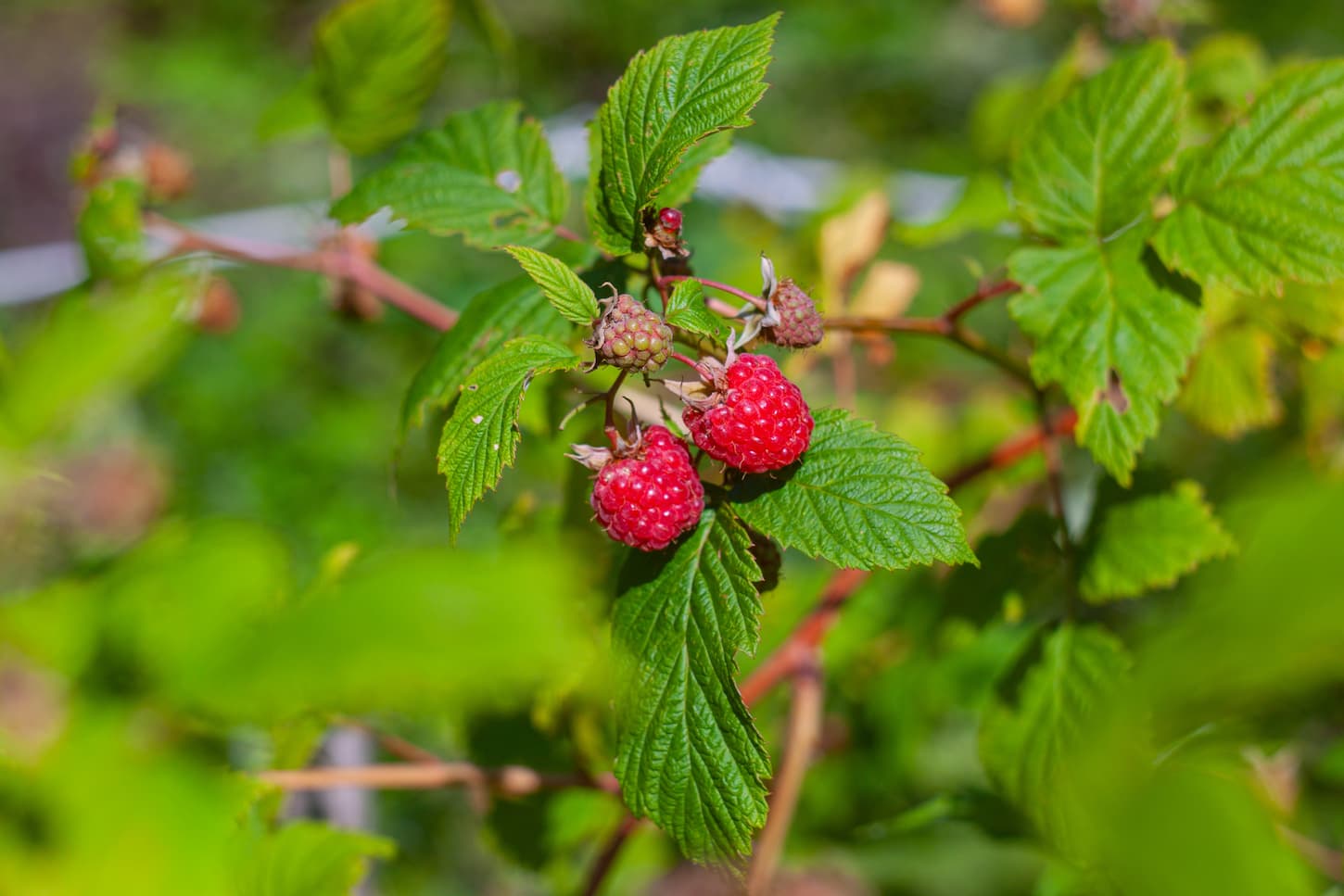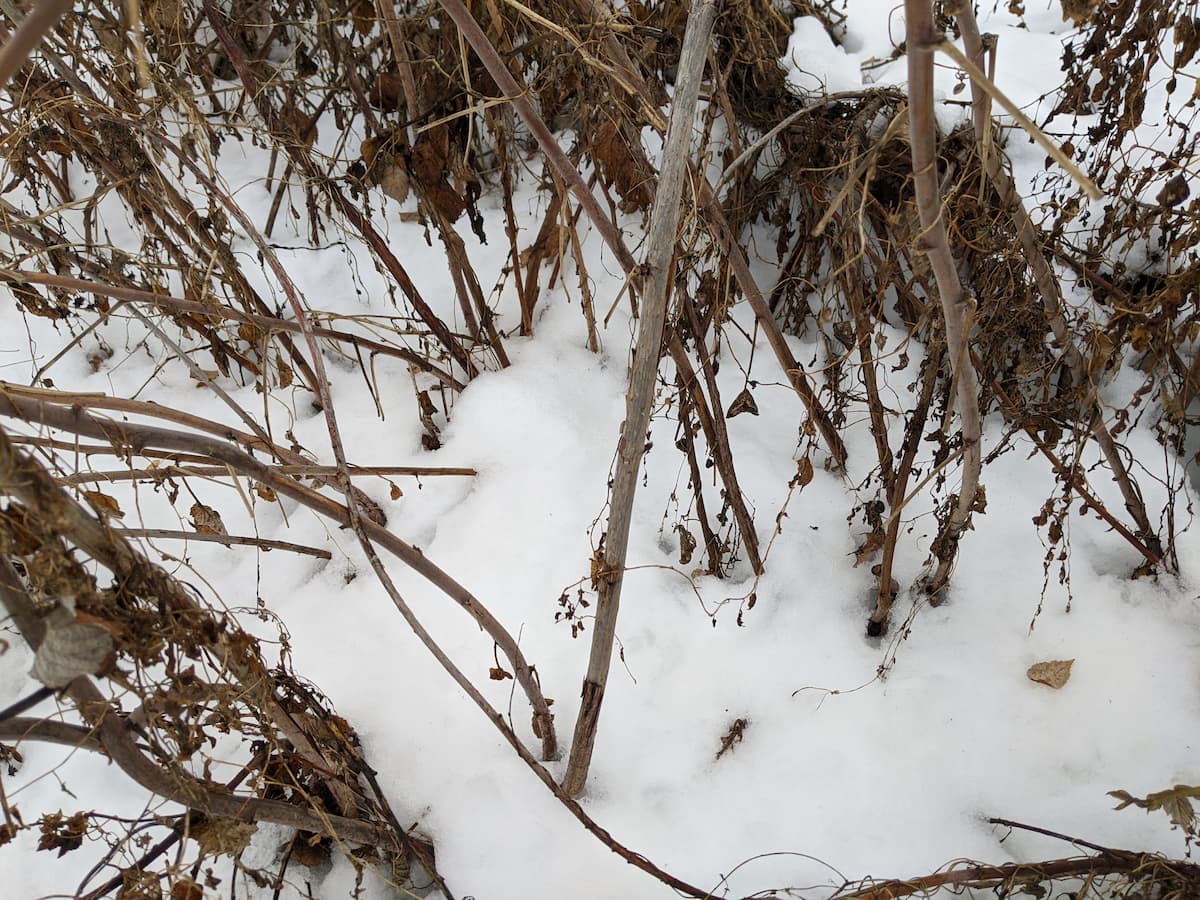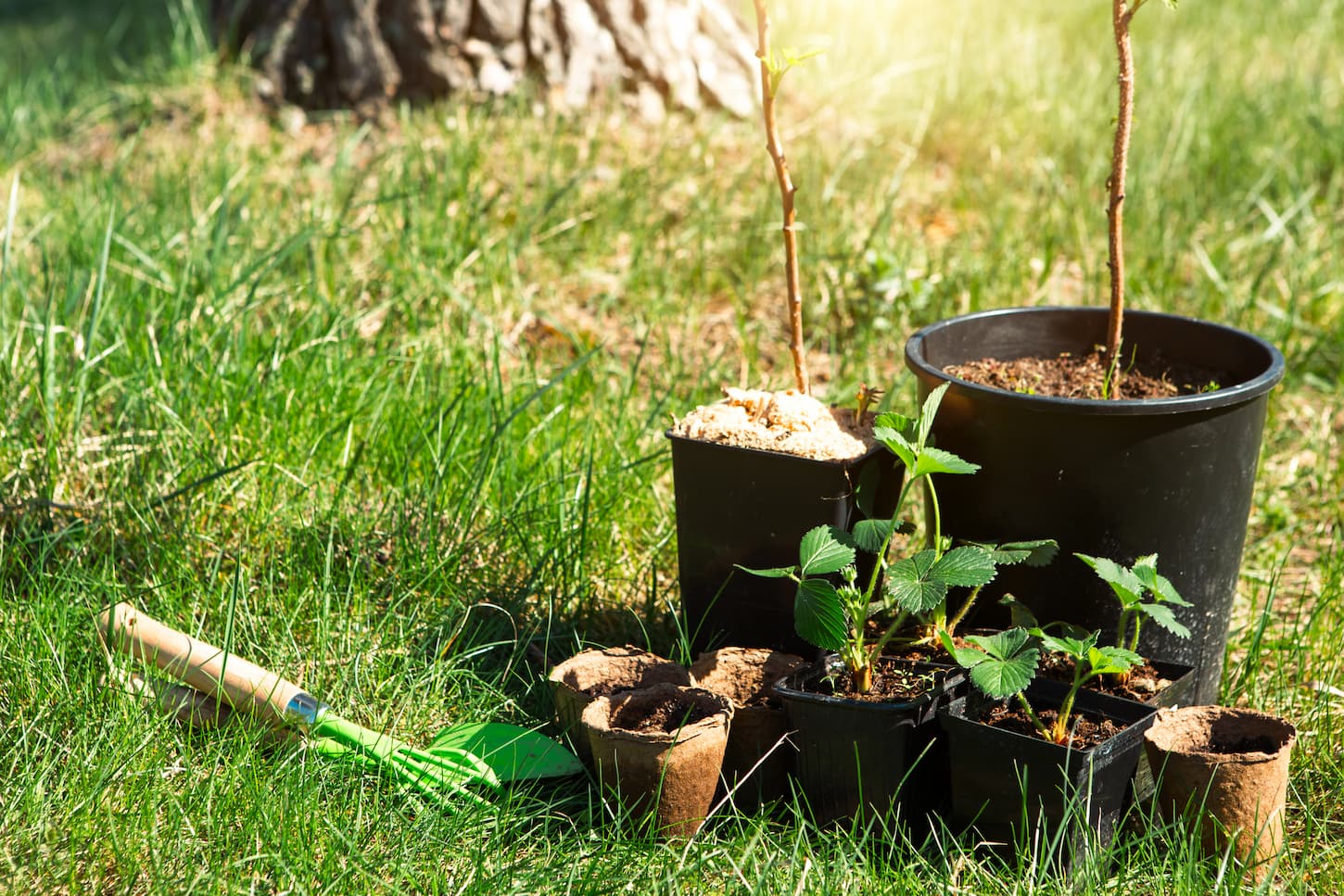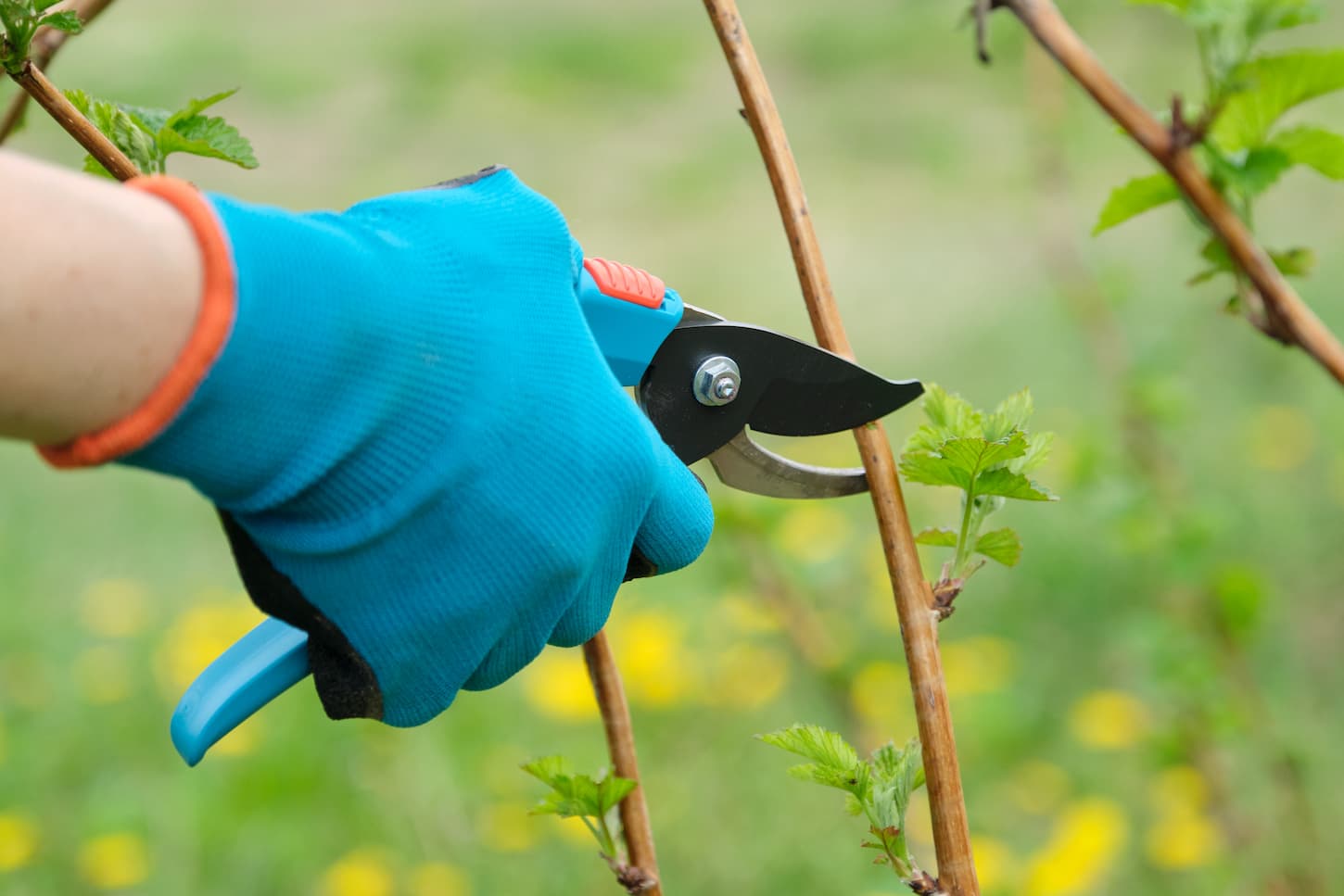One of the most satisfying moments you can ever experience is when you are harvesting berries you grow in your backyard. They are so much more delicious than anything you buy at the store. Furthermore, it makes you feel more confident that you have the freshest berries you have ever planted in your backyard. But the question is, why do we prune our raspberry plants?
Pruning or trimming raspberry bushes enhances the health of the plant, makes the plants more manageable, and enhances the harvested berries’ quality and size. Sometimes, it also changes the quantity of the berries being harvested.
If you wish to know more about how to prune your own berries and other questions you might want to ask, then I suggest you continue reading this article to know more about the complete guide on how to prune raspberries.

When Should Raspberries Be Cut Back?
When pruning or trimming raspberry bushes, prune back canes that are spent or done bearing fruit. Usually, ever-bearing berries, sometimes called fall-bearing, bear on primocanes (1st-year canes), while summer crops or summer-bearing grow berries on 2nd-year canes (floricanes).
This means that ever-bearing berries can be pruned back (or completely mowed over) every fall after harvest finishes. You could also mow the patch down in early spring before the canes have begun to grow. However, fall is usually better, as mowing it then mulches and protects the roots for winter.
For summer-bearing varieties, you’ll need to prune back individual canes on a yearly basis. Mowing the whole patch down would mean a year without berries, so don’t do that unless you’re willing to wait for a year to get another harvest.
How Do You Prune Raspberry Bushes?
To prune raspberry bushes, you need to know that pruning or trimming techniques for raspberry bushes depend on what kind of raspberry you are pruning.
Pruning red raspberry bushes
Most red raspberry bushes are either summer-bearing or fall-bearing varieties. How you prune them depends on the variety.
Pruning: Summer-bearing varieties
It is easy to tell the 1st from the 2nd year canes after the last summer harvest.
- First-year canes are a healthy brownish color.
- 2nd-year canes have a grayish color.

After harvesting, all of the summer-bearing shoots with fruits (berries), are called 2nd-year shoots or floricanes. And those shoots should be pruned down to ground level.
However, to have a good crop in your garden, you should also thin the 1st year canes. You can do this any time when the plants are dormant, such as in late winter or early spring.
Personally, I prefer to prune ours in early spring so I’m not freezing. Leaving the growth there for winter also helps protect the plants, provided you get on pruning ASAP in the spring so that you can control any pests and diseases.
I also let my chickens into the garden during the late fall, winter, and early spring months. They do amazing at keeping any pests out of the garden and raspberries.
When you are pruning or trimming the 1st year canes’ summer-bearing raspberries, remove the smallest or the weakest canes. Leave one plant every 4 to 6 inches or 10 to 15 centimeters. Really, you could even be more aggressive than that, leaving one plant every 8 to 12 inches. Pruning the primocanes will give you a better harvest in the future.
The next thing that you should do is to shorten the remaining canes, or “top” them. Keep in mind that the top portion of the shoot has numerous amounts of fruit buds, which means that you only need to prune the very tip.
- If you want to top them while being conservative, then when you are done, the height of the canes should be about 5 or 6 feet or 1.5 to 2 meters tall.
- If you want to top your plants aggressively, then they may only be 3 to 4 feet tall, or about a meter. This will mean fewer berries, but they will be larger and tastier.
I tend to be more aggressive in my pruning and topping these days. I started more conservative, but our berries are so good and plentiful that now I want them to be bigger and juicier and yummier!
In addition to that, you will get more berries if you also trim out the first waves of new canes in the spring. You can trim these out when the canes reach a height of about 6 inches tall or 15 centimeters.
Pruning: Fall-bearing varieties
Fall-bearing raspberry bushes can be trimmed or pruned for one crop or two crops. And each crop is pruned differently.
One crop
You do not necessarily need to prune in the summer with only one crop. However, go ahead and cut off all the canes to the ground during spring. There won’t be any summer crops to prune. Instead, only one in the fall will be using this method.
Two crops
Pruning fall-bearing raspberries are a little bit more complicated when you want to harvest the fall and early summer crop raspberries at the same time. You have to tell apart which one is the 1st year canes or primocanes, and which one is the 2nd year canes or floricanes, and prune them differently.
Primocanes are green in color and fruit in the fall. The following summer, primocanes will start their 2nd year and will now be called floricanes, with a dark green in color with peeling gray bark.
In the summer, the 2nd year canes fruits from the lower buds, and during this time, the new 1st year primocanes will start to grow.
Furthermore, when winter comes, you should trim these floricanes at ground level, taking care to differentiate them from the green 1st-year canes or the primocanes. And at the same time, thin out the 1st year canes and leave only the tallest, healthiest, most vigorous canes.
Pruning black or purple raspberry bushes
The first thing you need to do when pruning black raspberries is to cut the canes so that they will have the same height of between 24 to 48 inches (or 61 to 122 centimeters), with an ideal height of 36 inches or 91 centimeters. However, if you wish to have taller canes, leave them be. Pruning raspberries during the early fall season will signal the plant to produce more lateral branches.
In the spring, you will trim those black raspberry bushes again, but this time, prune them quite severely. For pruning during the spring season, you should wait until the plants are budding, but not with leaves on them. Pruning could stop its growth when there are growing leaves in the plant.
Next is to cut at a ground level the canes that will be dead since they produced fruits the year before. In addition to that, you should also cut down to the ground the canes that have been affected by the cold since they will just brittle down.
Now you are going to thin out the canes. The canes should only be 4 to 6 canes and less per hill. Select the healthiest canes and cut the rest out at ground level.
The next thing you need to work on is the side branches in which the fruits are developing. Count 8 to 10 buds away from the cane for each side of the branch, and then after that, cut off the rest of the branches.
Furthermore, black raspberries should be topped 2 to 3 times during the next few months to smooth out the side branches and make the cane stronger so that it grows more upright.

Do You Need to Top Raspberry Canes?
You are not required to top your raspberry canes. However, topping does make harvesting the fruit a lot easier. In addition to that, it also makes berries bigger or juicier, but it reduces the overall quantity of fruits grown. With this, I top my berry canes now, though I didn’t always do this.
I tend to be more aggressive with topping berry canes because otherwise I’d be absolutely swimming in berries every summer. I already harvest enough for our family each year, so it’s nice to be able to focus on quality rather than quantity.
Topping berries is also nice if you’re worried about trying to harvest lower-hanging fruit. It makes it a ton easier to avoid thorns, too, in my experience. That’s mostly because you’re only dealing with the larger, ground-end of the cane, and you don’t have to worry about the thorny top smacking you while you’re harvesting.
Should Raspberry Bushes Be Cut Down Every Year?
Only varieties that bear on a primocane can be cut down every year, though, it is technically optional. However, it is recommended to prune raspberry bushes every year to maintain their health and sufficient light penetration and airflow.
Not pruning your raspberry bushes will just lead them to have thicker bushes which cause the middle area of the plant to die due to lack of sunlight and inadequate airflow.
How Do You Prune Raspberries in the Spring?
Pruning raspberry bushes during spring is easy. Remove any spent canes from last year’s summer-bearing varieties with 1 harvest. For the ever-bearing or fall-bearing raspberries, you do not have to prune the raspberries during spring since you cut all the canes to the ground.
Again, you’ll want to mow those down in the fall after the leaves have fallen off or in the spring before they wake up and start growing. Fall is probably better so that mowing the canes and mulching protects the roots during the winter.
Do You Need to Prune Raspberries in the Summer?
There is no need to prune raspberry bushes in the summer since summer is raspberry harvest time. Once the shoots bear fruit, they will eventually die and may be cut down after harvesting or the following spring.
Do You Need to Prune Raspberries in the Fall?
Some raspberries may be pruned during fall. For summer-bearing (single harvest) varieties, remove spent canes only if you can tell 1st year canes from the 2nd year canes. Pruning summer-bearing raspberry bushes is easier after the leaves have fallen off their branches.
For ever-bearing or fall-bearing varieties, you can cut the whole patch down every fall before the snowfall. There is no need to worry that the whole patch has been cut down since there will be new canes that will grow and bear fruit next year.
Technically, you can instead mow down the patch in spring, but mowing the canes down in fall will naturally mulch the roots to protect them for the winter.
How Do You Prune Raspberry Bushes for the Winter?
Prune last year’s 2nd-year canes, which prevents spreading diseases or spores from afflicting the new canes due to overwintering them. 2nd-year canes have dark gray peeling bark and old, fruit-bearing side branches on them. Cut off all those dead canes at ground level.
It’s just like fall pruning.
Now, if you want to know more about preparing raspberry bushes for the winter, that’s another topic. Click that link to read my article on that topic now.
Do You Need to Do Any Winter Prep for Raspberries?
To protect raspberry plants, choose only the strong or sturdy plants suitable for the area. Trim, prune, or cut back the canes, then protect them from the wind. They may need to be covered depending on the winter weather. This will protect raspberry plants and protect next year’s fruit production.
If you’d like to read more about winter prep for protecting raspberries, make sure you read my article on it here: **LINK
What Happens if You Don’t Prune Raspberries?
Failure to prune back the spent canes on raspberries causes the raspberry bush to appear huge as it will expand outwards. The spent canes stop the sunlight and other nutrients from coming through to the middle of the plant. Over time, the center of the bush will die and spread diseases.
The thicker the bush of the raspberry becomes, the more that the center of the bush will consist of merely dead materials. In contrast, when you remove all the dead as well as the weak canes, it will put forward the opposite result when you do not prune back the raspberry bush.
There’s more on the subject, so if you want to get all the details, I’ve got a whole article for you here: What Happens If You Don’t Prune Raspberries? What To Expect.
FAQs
Now that we’ve gone through all the information, let’s make sure we’ve got all of your questions answered. If we don’t have your question covered, use the contact us page to let us know what it is. We’ll be sure to get it answered and update this article.
How to prune yellow raspberry bushes?
Pruning yellow varieties of raspberry bushes is the same as pruning red raspberry bushes.
What will happen if my raspberry canes are too tall?
Raspberry canes that are too tall will likely bend over once the leaves and their fruit growing. With canes that are too tall, you will have a hard time reaching the fruit unless you make use of cane support (like a trellis system for canes) or top the canes.
Important note: if you have a thorny variety of raspberry bushes, too-tall canes mean a lot more thorns and it’s harder to harvest the fruit. I recommend topping those aggressively.
Thornless varieties can do well with a trellis, although “thornless” should really mean”finer thorns that still hurt, at least there are not giant thorns.”
Can a raspberry bush grow in the shade?
There are some different kinds of raspberry bushes that can grow in the shade; however, they won’t be able to produce much fruit compared to those raspberries planted directly with sunlight. Other berry varieties, like gooseberries, currants, and other blackberries, can do better in the shade.
If your growing area is shady, you’ll do better picking a berry variety that tolerates shade.
Again, there’s more to it than this quick answer, but that’s for another article here: Can Raspberry Bushes Grow in the Shade?
Pro tip: if you want to know about shade-tolerating berries in general, here’s an article covering all berries I wrote.
Why are there no raspberries forming?
One of the most common reasons why your raspberry is not growing any fruit is improper pruning. Other issues can also cause this problem: improper growing conditions, nutritional issues, pests, or diseases may cause problems with reaching full size or harvest failure in a raspberry patch.
If you want more specific information on berries not forming or fruiting, here are some articles on this site you’ll want to check out.
- Complete Guide to Berries: Plant, Grow, Harvest, and Care
- Why Does my Gooseberry Bush Not Fruit? 6 Causes.

Next Steps
Growing and maintaining our beloved plants has never been that easy. But with pure patience and perseverance in taking care of them, it will surely bear the fruit of all our hard work.
Pruning raspberry bushes can be easy if you know when you should do it and what you should need to do with your plants. Always keep in mind that what you plant today, will harvest tomorrow.
What do you do with that harvest? Well, that’s up to you. Personally, we love making our homemade raspberry jam and storing it so we’ve got fresh jams and preserves all year round. It’s a solid recipe that I’m happy to share with you.
Resources
Learning from your own experience is essential, but learning from others is also intelligent. These are the sources used in this article and our research to be more informed as homesteaders.
- “Pruning Berries: The Ultimate Guide.” Backyard Homestead HQ, 15 Jan. 2022, backyardhomesteadhq.com/pruning-berries-the-ultimate-guide.
- Spengler, Teo. “Fall-Bearing Raspberry Pruning: Tips On Pruning Fall-Bearing Red Raspberries.” Gardening Know-How, www.gardeningknowhow.com/edible/fruits/raspberry/fall-bearing-raspberry-pruning.htm.
- Spengler, Teo. “Pruning Summer Fruiting Raspberries – How To Prune Summer Raspberry Bushes.” Gardening Know-How, www.gardeningknowhow.com/edible/fruits/raspberry/prune-summer-raspberry-bushes.htm.
- Starr, Kimberly. “How To Protect Raspberry Plants In Winter: A Step-by-Step Guide.” Backyard Homestead HQ, 15 Jan. 2022, backyardhomesteadhq.com/how-to-protect-raspberry-plants-in-winter-a-step-by-step-guide.
- Tilley, Nickey. “Raspberry Pruning: Information On How To Prune Raspberry Plants.” Gardening Know-How, www.gardeningknowhow.com/edible/fruits/raspberry/pruning-raspberry-bushes.htm.
- “What Happens If You Don’t Prune Raspberries? What To Expect.” Backyard Homestead HQ, 15 Jan. 2022, backyardhomesteadhq.com/what-happens-if-you-don’t-prune-raspberries-what-to-expect.